|
MAIN PAGE
> Back to contents
Urban Studies
Reference:
Musienko A.V., Akulova N.A.
Proposal to Create a System of Archival Materials for the Preservation of Historical Objects of St. Petersburg
// Urban Studies.
2024. № 1.
P. 37-49.
DOI: 10.7256/2310-8673.2024.1.39978 EDN: GQCOUL URL: https://en.nbpublish.com/library_read_article.php?id=39978
Proposal to Create a System of Archival Materials for the Preservation of Historical Objects of St. Petersburg
Musienko Aleksandra Vladimirovna
ORCID: 0000-0001-8785-3943
Specialist, St. Petersburg State Institution "Customer's Directorate"
191023, Russia, Saint Petersburg,Torgovii lane , 2

|
mus210586@gmail.com
|
|
 |
Other publications by this author
|
|
|
Akulova Nadezhda Aleksandrovna
PhD in Architecture
Associate Professor, Department of Reconstruction and Restoration of Architectural Heritage, St. Petersburg State University of Architecture and Civil Engineering
190005, Russia, Saint Petersburg region, Saint Petersburg, 2nd Krasnoarmeyskaya str., 4

|
naroma@list.ru
|
|
 |
|
DOI: 10.7256/2310-8673.2024.1.39978
EDN: GQCOUL
Received:
14-03-2023
Published:
21-03-2024
Abstract:
The subject of the study is the interest of specialists in the study and analysis of cultural heritage sites of St. Petersburg. The object of the study is an information resource on this topic - the city archives and electronic resources of St. Petersburg. The purpose of the study is to substantiate the need to optimize access to complete and reliable information on the cultural heritage of St. Petersburg. This information is disassembled from a variety of unrelated sources, which complicates the work of specialists in terms of quick access to complete information on the object. Analysis of the studies showed the relevance of the issue in obtaining materials on cultural heritage objects, but the method of optimal access to them has not been developed. On the basis of the considered problems, a hypothesis was built and an empirical study was carried out in the form of a survey of specialists in the sphere of preservation of cultural heritage objects of St. Petersburg. The results of the study made it possible to identify the problem of obtaining information and suggest a way to solve it. A proposal has been formulated to optimize the work of specialists, in terms of access to reliable and complete data on the cultural heritage of St. Petersburg. To do this, it is necessary to systematize archival sources and information systems for each object of cultural heritage into a single database. The authors have designated sections and headings of a single information source. The practical value of the study lies in the development of a proposal for the prompt receipt of information necessary for the design and other studies of cultural heritage sites in St. Petersburg. Its structure and approach to implementation are disclosed. A potential audience of specialists working in the field of conservation, use, promotion and state protection of cultural heritage sites of St. Petersburg is indicated. The results of the study can draw the attention of specialized specialists to the identified issues and become the basis for creating a system of archival materials for the preservation of historical objects of St. Petersburg.
Keywords:
cultural heritage sites, digital development, digital heritage, systematization, single information source, aggregation of anonymized data, archive system, database, restoration, pre-project studies
This article is automatically translated.
You can find original text of the article here.
Introduction The experience of generations of restorers has formed a proven system that reflects approaches to the preservation of the monument and variations in solutions to the tasks set. Some solutions have been criticized by the scientific community and the public, while others have received sustained practical application. For this reason, the value of implemented solutions and techniques is a valuable material for the restoration community. However, what was good for one cultural heritage site (hereinafter referred to as the WINDOW) may ruin another. Due to these circumstances, an individual approach to the restoration object has become the optimal resolution of modernity. According to the data of the Committee for State Control, Use and Protection of Historical and Cultural Monuments (hereinafter – KGIOP) for 2020, in the territory of St. Petersburg?There are 8,983 windows in St. Petersburg, of which 3,762 windows of federal significance, 2,509 windows of regional significance, and 2,712 identified windows. These statistics provide an understanding of the scale of the objects to be preserved and the huge potential of the information material created on its basis. The relevance of the study is due to the need to gain access to complete information about a particular window, necessary for carrying out design work and research. The volume of scientific material at the moment does not allow us to quickly obtain the necessary information for the designated tasks. For example, only the amount of documentation required for the development of GOST R 55528-2013 (National standard of the Russian Federation. The composition and content of scientific and design documentation for the preservation of cultural heritage sites. Historical and cultural monuments. General requirements [1] for the performance of restoration work on cultural heritage sites) consists of a variety of books that limit the operational search for relevant data. It can be assumed that the systematization of historical, architectural and restoration materials for windows will provide specialists with the most holistic perception of the whole picture of changes taking place at the facility. One source will combine the individual life story of the WINDOWS and reflect the technical capabilities of its time. This systematization is also necessary in connection with the digital development of Russia and the implementation of the project to create a national data lake - combining depersonalized data from authorities at all levels, allowing for the formation of advanced analytics [2]. Data processing for government analytical services will serve to optimize the work of government agencies and budget organizations by means of automated document generation. To achieve this goal, it is necessary to solve a number of the following tasks: to identify studies indicating the analysis of the restoration of windows; determine the need to optimize the search for information on windows among specialists in the restoration field; formulate a proposal for simplified access to complete and reliable information. In the modern world, there is a stable attention to the field of windows. Based on the analysis of research by K. I. Musin [3] and M. S. Shumilkin [4], revealing the chronology of restoration work and restoration methods used at the sites indicated in the reviews, it is possible to draw conclusions about the interest in the experience of repair and restoration activities. Restoration methods are of particular interest to specialists. This is confirmed by the high appreciation of such monumental monographs as "Stroganov Palace layered clearing". The history of the restoration of the famous St. Petersburg building" [5] and "St. Isaac's Cathedral. Sculptural decoration, balustrades of a circular column" [6]. This circumstance, in turn, encourages a visual analysis of restoration practices both at one site and comparing the identified experience with other objects. The induction method contributes to the development and promotion of the direction of window preservation and leads to significant conclusions. The evidence of this fact is the materials of X's research. Abass [7], E. A. Klyukina [8], N. A. Kosenkova [9]. The illumination of restoration methods is, first of all, valuable for the object itself. This is explained by the practical importance of this activity as a means of optimizing the workflow. It serves as a starting point in the development of future approaches and other recommendations in the processes of monument preservation. In the work of Yu. A. Gorelik and E.N. Baulina [10], we see the justification of the project proposal for the restoration of the object, based on the pre-project results. However, there is no information about the materials used and the methods of work. This can be explained by the fear of possible criticism from the practicing community. In our opinion, the openness of restoration practice should be welcomed. It is worth noting the regulatory aspect of the restoration sphere. The study of this issue is devoted to the study of T. A. Mitrokhin [12], which notes that the procedure for carrying out restoration measures was previously simpler. As we prepare for the restoration work today, we can visually assess the evolution of this process. In this situation, specialists often face a lack of research from previous years, on which they could rely in their design decisions. The way out of this situation is the possibilities of technological progress that can compensate for some of the missing archival materials, but these studies require time and financial resources. In addition, these methods are often destructive to the monument, which causes the user to fear and entails the refusal of these surveys. In order to avoid the loss of research and conclusions on OKN [11], their early systematization is necessary. The process of preserving windows is multifaceted and each aspect of it leaves an information trail that serves as the basis for modern technologies. This idea is confirmed in the studies of M. F. Hartanovich [13], N. G. Kubanova and Z. A. Gadzhiev [14], K. M. Rebec, B. Deanovich, L. Oostwegel [15]. From the relevance of systematization and digitalization of restoration experience, to the creation of a new information management methodology - building information modeling (BIM). Analyzing the authors' points of view, we come to the conclusion that collecting even fragmentary elements of information is important for evaluating an object. In our opinion, structuring information by WINDOWS will reduce labor costs for the implementation of restoration processes, protect information from loss, reveal the overall systemic picture of the object's life, and also become a reference material for integration into BIM, which in turn will serve to preserve both private examples of monuments and the entire world heritage. Materials and methods An empirical study on the topic of systematization of an information resource on WINDOWS was conducted among specialists in the field of window conservation. 30 people participated in the experiment. The participants were divided into the groups shown in Table 1. The hypothesis of the study was as follows: "It can be assumed that the development of EI will serve to optimize the workflow of specialists in the field of conservation, use, popularization and state protection of WINDOWS."
The purpose of the study is to substantiate the need to develop an EI. Therefore, we see the need to localize information on the preservation of WINDOWS as a source of knowledge for generations. In our opinion, it will become the main tool in the development of the entire industry of window preservation, as generation after generation studies the experience of previous years, improves and applies it in practice. The tasks of the experiment: 1. To determine the relevance of the information on the window and the interest in its inclusion in the EI. 2. To determine the level of satisfaction with the use of archived data on WINDOWS. 3. To identify the fundamental attitude to the introduction of EI into the work of restoration specialists. Table 1. Groups of respondents to the empirical study. | Gr. | Name of the participants | Qualification level | Number of people. | | I | Design organizations | Specialized specialists in the implementation of restoration projects and repair and restoration work | 10 | | Contractors | | II | Representatives of the customer of the work: employees of the Department of technical supervision and acceptance of works | Specialized specialists in quality control of work performed by contractors and design organizations |
10 | | Representatives of the customer of the work: employees of the project documentation department | | III | Representatives of the author's supervision and scientific management | Specialized specialists in scientific support of restoration works and specialists in the field of cultural heritage protection | 10 | | KGIOP staff | Empirical data for the experiment was collected in the form of a questionnaire on Google on the Internet using the Likert scale and other data visualization. The study is conducted using a quantitative method. This made it possible to visually compare the attitude of different groups to the tasks set, as well as to identify their differences and similarities. The survey was limited to six questions without the possibility of choosing your own answer option. The empirical study consisted in analyzing the results of the survey. The first question in the form of an approval sounded like this: "The following data should be included in the content of the EI:". The respondents were asked to choose one or more answers: 1. A list of archival sources for each window (located in the KGIOP, FSUE "Research Institute of Special Project Restoration "Special Project Restoration", JSC "St. Petersburg Institute "Lenproekt Restoration", city archives and other information resources); 2. Brief historical background; 3. The results of the conclusions on the probes, pits and laboratory studies of samples carried out at the window; 4. The chronology of repair and restoration activities at the window; 5. OKN passport, conclusions of the state historical and cultural expertise. The result of the first survey is shown in Figure 1a. Based on the data obtained, it can be concluded that the most important for respondents of all groups are data on the lists of archival sources for this window and the chronology of repair and restoration activities at the window. The next question allowed us to use the Likert scale to determine how convenient it is to access archived data on WINDOWS. For the statement "Currently, the use of archived information on WINDOWS is very convenient", it was proposed to determine the degree of agreement, where 1 - Completely disagree, 5 – Completely agree. The result of the survey is shown in Fig. 1b. Based on the empirical data obtained, it can be concluded that the average level of agreement with the statement demonstrates the ambiguity of the convenience of using archival information. The average level of agreement for the group is as follows: I gr. – 3, II gr. – 3.3 , III gr. – 3.1. The third question was aimed at determining the degree of satisfaction of the groups with the availability of archival sources and sounded as follows: "Currently there is not enough archival information on WINDOWS that makes it possible to gain an understanding of the activities for the preservation of WINDOWS." The degree of agreement was determined by the scale of agreement, where 1 - Completely disagree, 5 – Completely agree. The result of the survey is shown in Figure 1. The analysis of the responses demonstrates the unstable satisfaction of the survey participants with the availability of archived information on WINDOWS. The average level of agreement by group is as follows: I gr. – 2.8, II gr. – 3.7, III gr. – 3.3.
The opinion of the groups on the statement "EI will reduce the time to obtain the necessary information on the WINDOW" was aimed at obtaining an assessment of respondents using the Likert scale. The degree of agreement was determined by the scale of agreement, where 1 - Completely disagree, 5 – Completely agree. The result of the survey is shown in Figure 1. Based on the data obtained, there is a predominant agreement of the groups with the statement. The average level of agreement by group is as follows: I gr. – 4.1, II gr. – 4.4, III gr. – 3.3. In the fifth statement that "the EI should become a mandatory part of the initial permits provided together with the task of carrying out work on the preservation of windows", the groups chose one of the answers: agree/ disagree. The result of the survey by groups is shown in Fig. 1 d, and in Fig. 1 e, the overall result of the respondents is presented. Evaluating the results of the responses by groups, it can be concluded that there is a noticeable disagreement in the I gr. and similarity in agreement with the statement in the I gr. and II gr. In the final question, the groups were asked to express a principled attitude to the hypothesis, which sounded as follows: "the development of EI will be a product of optimizing the workflow of specialists in the restoration industry." The result of the survey by groups is shown in Figure 1 g, and Figure 1 h shows the overall result of the respondents. According to Fig. 1 g, it is possible to identify an unambiguous agreement with the statement in gr. I and gr. III and a slight difference of opinion in gr. I. Fig. 1 h. clearly demonstrates the prevailing agreement among the groups. Thus, it was revealed that all groups have an interest in EI, as well as preferences for its content. The convenience of using archived information of the group was rated as average. The sufficiency of archival information is also determined by average satisfaction. The participants mostly agree with the statement that the EI will reduce the time to receive information on the WINDOW. The groups expressed overwhelming agreement with the statement on the inclusion of EI in the initial permits, and also almost unanimously agree that the development of EI will be a product of optimizing the workflow of specialists in the restoration industry. Summing up the results of the experiment, we can say that the hypothesis has been proven – the goal has been achieved, the tasks have been solved. Discussion The results of the experiment show that the systematization of information on WINDOWS, as well as the development of databases, is an urgent issue among the restoration community. Specialists involved in the issues of preserving WINDOWS express interest in the development of EI and consider it a product of optimizing work processes in the future. In view of the continuous development of the restoration industry processes, generalization, analysis of the developed information, as well as their structured storage is its logical consequence. Given the intensive spread of digital culture, the development of EI will be a product of this process. Research suggests the need to develop the digitalization of the modern community. It is inevitably introduced into the state system, as it carries a number of advantages that simplify communications between government agencies and increase the availability of information to society. (I. V. Chernova [16] and E. A. Zavyalova [17]). Like many innovations, the development of digitalization has two sides of the coin, creating barriers to digitalization both in Russia and in the global experience (Wilson C., Mergel I. [18],). Research by S. V. Volodenkov [19] considers potential risks beyond control. In the case of the idea of developing an EI, among the respondents of the experiment there were participants expressing concern that the finished material on historical information on WINDOWS would remove responsibility from design organizations in terms of searching for additional information on windows, which are justification and clarification when working on the monument. However, we see a solution to a promising problem by entering the terms of use of the EI and the requirements for the development of the project. The development of information bases for both internal, interstructural and public use is an established successful practice. One of the striking examples is the information system for urban planning activities (hereinafter – ISOGD) in St. Petersburg, which is an information system containing information, documents, materials on the development of territories, on their construction, on existing and planned capital construction facilities and other information necessary for urban planning activities. An information system such as MapInfo and RGIS (the state information system of the executive bodies of state power of St. Petersburg) has also proven itself in use.?St. Petersburg). It is worth noting that in terms of obtaining information on the state archives of the city, there is such an electronic resource as the Navigator on the state websites of St. Petersburg [20]. This resource provides the ability to search through archival documents and reference books, by keywords. However, the search is performed according to the words included in the name of the document. The information contained in these resources is taken into account when developing projects for the restoration and adaptation of windows for modern use. In view of these circumstances, we believe that it would be possible to combine the above-mentioned resources and ITS. The result of such an association will increase the efficiency of public administration (G.P. Sorokina [21]). One of the options for accessing the materials of the EI is to consider the possibility of obtaining information from the EI using the means of the portal "Public Services", which is continuously developing and provides more and more opportunities to society. Conclusions The study of windows is a continuous process that occupies its niche in scientific research aimed at preserving windows. The search and systematization of information developed since the implementation of the WINDOW is the basis for these processes. In this regard, the proposal to create an EI meets the request of specialists in the field of preserving WINDOWS in terms of prompt and full access to a reliable information resource. The essence of this proposal is as follows. The purpose of the EI is to create one of the main tools combining electronic information systems and archives of the city (containing urban planning data, archival and bibliographic information, iconographic materials, design and accounting documents). System format: electronic resource - database. The structure of the EI: initial documentation and other data; urban planning materials; archival and bibliographic materials; design materials; expertise.
These sections assume different access modes (free/restricted/especially restricted). Restricting access to some information is necessary in order to protect it from misuse. To achieve the above-mentioned goal, it will be necessary to create a working group responsible for the inventory of information on WINDOWS. The activities of the specialists of this group will be aimed at filling out individual cards / personal account for each WINDOW separately according to a given structure, with direct links to the source and the digitized document, if available. Thus, an integrated system will allow researchers, architects, restorers and historians to gain an exhaustive understanding of the availability of archival materials on the studied window, their storage location, as well as to familiarize themselves with digitized copies. Additionally, the system provides for the search for information by keywords, as this option will significantly reduce the search time for the necessary material. To optimize the process of entering information related to keywords, it is necessary to introduce a requirement for its designation at the stage of development of project documentation and its output to a separate document. By manually entering, the specialist of the working group will enter the data on keywords in the card / personal account of the window. Keywords are subject to distribution under the following headings: the value of windows, type of windows, condition, architectural style, types of finishing materials, artistic techniques of decoration, objects of DPI, architects, craftsmen, manufacturers, owners. According to the above conclusions, the structure of the window card (personal account) in the EI system is presented (Fig. 9). Thus, for the first time, the EI will provide an opportunity to promptly obtain reliable and complete information on the windows of St. Petersburg to specialists in the field of conservation, use, popularization and state protection of windows. Illustrations | 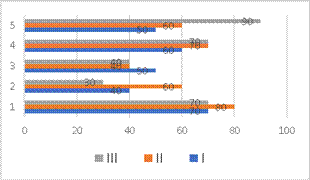
| 
| | Fig. 1 a. The distribution of the priority of the EI data. | Figure 1 b. The level of respondents' agreement with the convenience of using archived data. | | 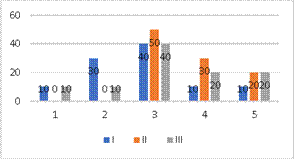
| 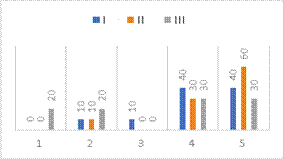
| | Fig. 1 in. The level of respondents' agreement with the third statement. | Figure 1. The level of respondents' agreement with the fourth statement. | | 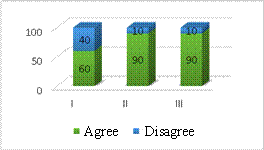
| 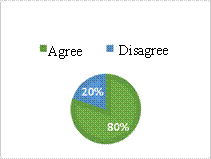
| | Fig. 1 d. Respondents' attitudes to the fifth statement by group | Figure 1 E. The overall result of the respondents' attitude to the fifth statement | | 
| 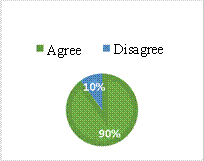
| | Fig. 1 g. The results of the response of the principal relation to the hypothesis by groups. | Fig. 1 h. The overall result of the response is fundamentally relevant to the hypothesis. |
Fig. 1 The structure of the card (personal account) of the cultural heritage object 
Fig. 2
References
1. GOST R 55528-2013 «Composition and content of scientific and project documentation for the preservation of cultural heritage objects. Historical and cultural monuments. General requirements.» [Electronic resource]. Retrieved from https://docs.cntd.ru/document/1200104243
2. Ministry of digital development, communications and mass communications of the Russian Federation. Events. Retrieved from https://digital.gov.ru/ru/events/41556/
3. Musina, K.I. (2017). Experience of the Kazan Restoration School in the Context of the Methodology for the Preservation of Russian Cultural Heritage Objects. Vectnik Kazan State University of Culture and Arts, 4, 43-47.
4. Shumilkin, M.S. (2021). Restoration practice of the Ascension Caves Monastery Nizhniy Novgorod. Privolzhsky scientific journal, 3(59), 132-136.
5. Kuznetsov, S.O., & Nesvetailo, T.N. (2017). Stroganov Palace: layer-by-layer clearing: the history of the restoration of the famous building of St. Petersburg. Moscow, Russia: Russian Museum: V. Potanin Charitable Foundation.
6. Chernenko, V.A., & Shchedrin, P.G. (2019). Saint Isaac's Cathedral. Sculptural decoration, circular column balustrades. St. Petersburg, Russia: Faces of Russia.
7. Abass, H. (2016). Methods of preservation of monuments of architecture and urban planning in modern restoration practice. International scientific and technical conference of young scientists of the BSTU V.G. Shukhov (pp. 2437-2441).
8. Klyukina, E.A. (2017). Analysis of the restoration practice of the Gorky restoration workshop in 1950-1970. Collection of works of graduate students, undergraduates and applicants. NNGASU (pp. 74-78). Nizhny Novgorod, Russia.
9. Kosenkova, N.A. & Biryukov, I.S. (2018). World experience in the restoration of historical buildings. Differentiation of approaches. Creativity and modernity, 1(5), 44-48.
10. Gorelik, Yu.A., & Baulina, E.N. (2020). Recommendations for the restoration of buildings N.E. Efimov in the Resurrection Novodevichy Convent. Architectural seasons in SPbGASU: Collection of materials of the X Regional creative forum with international participation. SPbGASU (pp 210-211). St. Petersburg, Russia.
11. Mitrokhina, T.A. (2017). The influence of legislative documents on the development of restoration practice in Russia in the 1960s-1980s. Collection of works of graduate students, undergraduates and applicants NNGASU (pp. 86-91). Nizhny Novgorod, Russia.
12. Degula, S.A., & Lanskaya, D.V. (2022). Issues of ensuring the safety of archival documents in the GKU «Archive of documents on the personnel of the Krasnodar Territory». Practice 2021: Document Science, Archiving, Management: Proceedings of the final scientific and methodological conference "Practice 2021" to summarize the results of practices conducted in 2021. in the Department of General, Strategic, Information Management and Business Processes, KSU, Krasnodar, December 17–20, 2021. Kuban State University (pp. 8-23). Krasnodar, Russia.
13. Khartanovich, M.F. (2019). On the first historical and architectural certification of the building of the Kunstkamera of the Academy of Sciences. Questions of museology, 2, 247-262. doi:https://doi.org/10.21638/11701/spbu27.2019.212
14. Kurbanova, N.G., & Gadzhiev, Z.A. (2020). Information and recommendation system in restoration. Eurasian Union of Scientists, 7-1(76), 43-47. doi:10.31618/ESU.2413-9335.2020.1.76.897
15. Rebec, K.M., & Deanovič, B., & Oostwegel, L. (2022). Old buildings need new ideas: Holistic integration of conservation-restoration process data using Heritage Building Information Modellin. Journal of Cultural Heritage, 55, 30-42 Retrieved from https://doi.org/10.1016/j.culher.2022.02.005
16. Chernov, I.V. (2021). Digitalization as the development of modern society: specifics of scientific discourse. Humanitarian of the South of Russia, 1, 121-132.
17. Zavyalova, E.A., & Pogadaeva, N.Yu. (2021). Digital transformation of state and municipal services. Vestnik Kemerovo State University. Series: Political, sociological and economic sciences, 2(20), 219-228.
18. Wilson, C., & Mergel, I. (2022). Overcoming barriers to digital government: mapping the strategies of digital champions. Government Information Quarterly, Issue 2(39). Retrieved from https://doi.org/10.1016/j.giq.2022.101681
19. Volodenkov, S.V. (2018). Digital technologies in the system of traditional institutions of power: political potential and modern challenges. Vestnik of the Moscow State Regional University, 2, 39-48.
20. Sorokina, G.P., & Shirokova, L.V., & Astafieva, I.A. (2019). Digital technologies as a factor in improving the efficiency of state and municipal management. Intellect. Innovation. Investments, 2, 73-83.
21. Navigator for state sites of St. Petersburg. (2023). Retrieved from https://spbarchives.ru/
22. Government of St. Petersburg. Committee for State Control, Use and Protection of Historical and Cultural Monuments. (2023). Retrieved from https://kgiop.gov.spb.ru/populyarizaciya/
Peer Review
Peer reviewers' evaluations remain confidential and are not disclosed to the public. Only external reviews, authorized for publication by the article's author(s), are made public. Typically, these final reviews are conducted after the manuscript's revision. Adhering to our double-blind review policy, the reviewer's identity is kept confidential.
The list of publisher reviewers can be found here.
The topic of the article is "A proposal to create a system of archival materials for the preservation of historical sites of St. Petersburg." (hereinafter - the Work) The Journal's specialization is relevant and relevant: Urban Studies (hereinafter referred to as the Journal). 2. The content of the Work fully corresponds to the theme stated in the title. The subject, objectives, methodology and main results of the study are described in detail accurately and clearly. 3. The quality of the conclusions and scientific argumentation in the Work meets the requirements for scientific publications. The scientific novelty of the Work is undoubtedly due to the digital development of Russia. The main theses and conclusions are based, as it seems, on the data scrupulously provided by the author and solid sources. The significance, logic, validity, and reliability of the conclusions are confirmed by a modern and voluminous reference apparatus. 4. The work provides a detailed analysis of the current state and degree of research of the problem, analysis and criticism of the results obtained with an appeal to opponents. that the significance of the findings meets the requirements for scientific publications. 5. The scientific literature and sources used by the author of the Work, from the point of view of their relevance, fully correspond to the problems of research, relevance, and are sufficient to solve the tasks set in the Work. The bibliographic list consists of 22 sources, among which there is a sufficient volume of modern peer-reviewed scientific sources of domestic authors. At the same time, according to the requirements of the Journal, "the recommended volume of the list of references for an original scientific article ... should contain: at least one third of foreign sources. 6. The design of the work fully meets the requirements for the preparation of academic journal articles: there are all the necessary structural elements, namely, devoted to the relevance of the research topic, the analysis of the state of the issue, the formulation of the problem to be solved, the research methodology, the results obtained, the critical analysis of the results, conclusions. the style of presentation, the correctness of the design and the validity of the use of tables, diagrams, drawings and formulas, the correctness of the design Linguistic and stylistic characteristics of the Work are scientific, the style of presentation is academic. The text is informative. The presence of tables, diagrams, and figures in the text is justified, and their design meets the requirements. The design of the bibliographic list partially complies with the requirements of the Journal, according to which "the list of references includes only peer-reviewed scientific sources (articles from scientific journals and monographs) that are mentioned in the text of the article. The list of references does not specify: regulatory and legal documentation ..." etc. 8. The works have a high degree of scientific novelty. The content of the Work is based on a deep and professional scientific empirical research on the topical topic of electronic systematization of historical, architectural and restoration materials related to domestic cultural heritage sites as a source of knowledge for generations. The results of the study are of undoubted practical importance and are of interest to the scientific community in terms of contributing to the development of science.
Link to this article
You can simply select and copy link from below text field.
|
|




